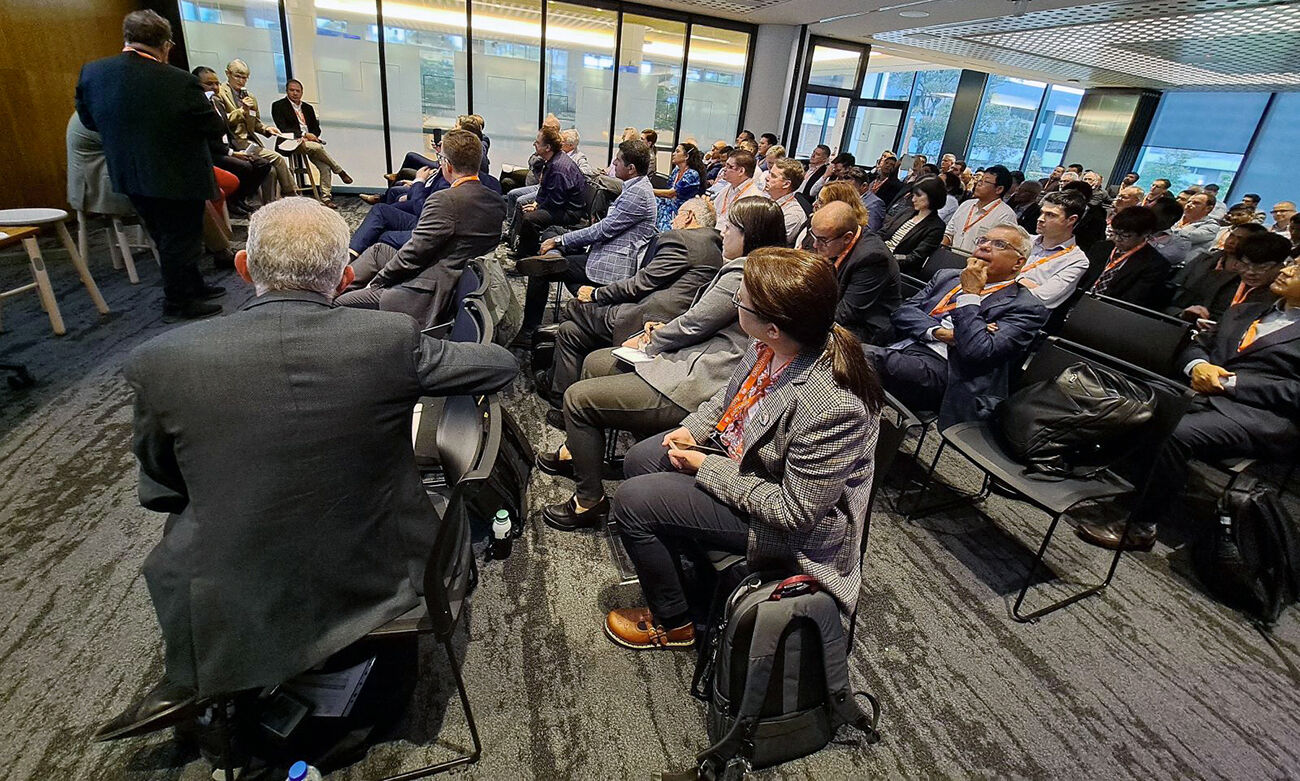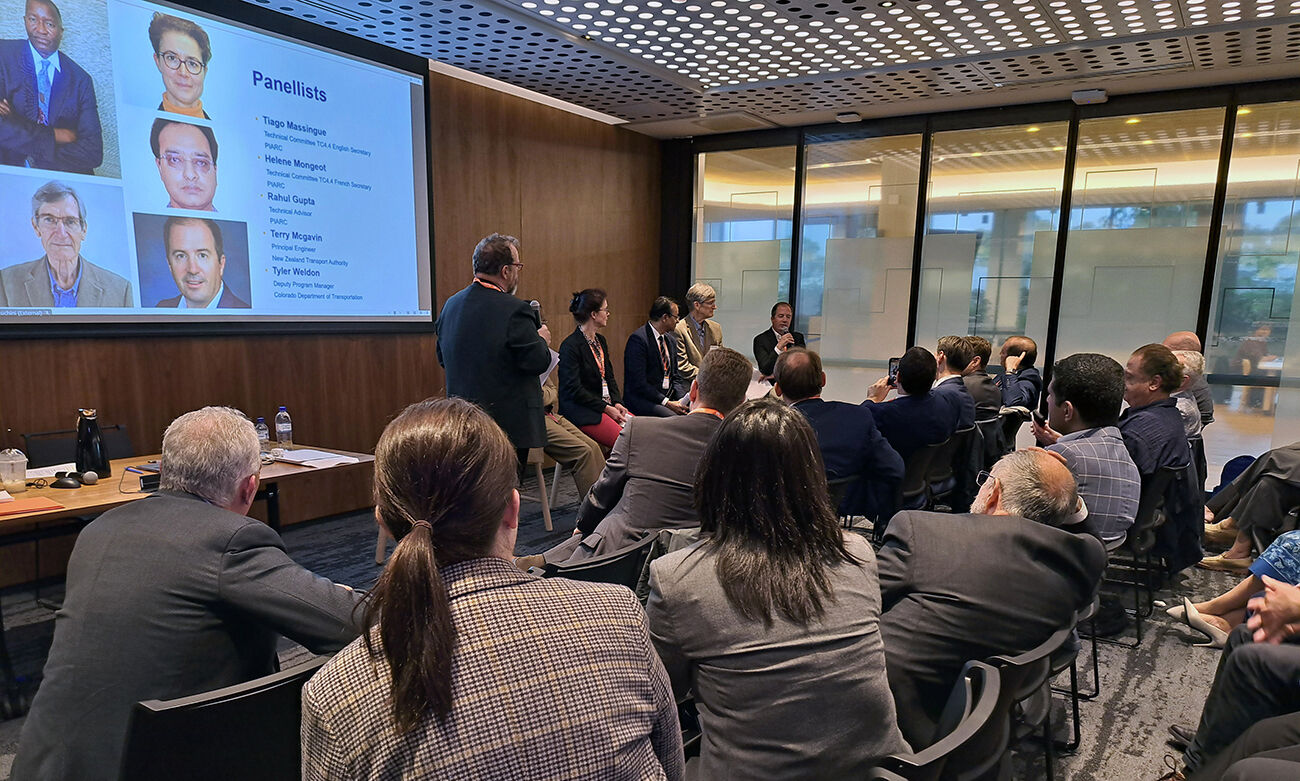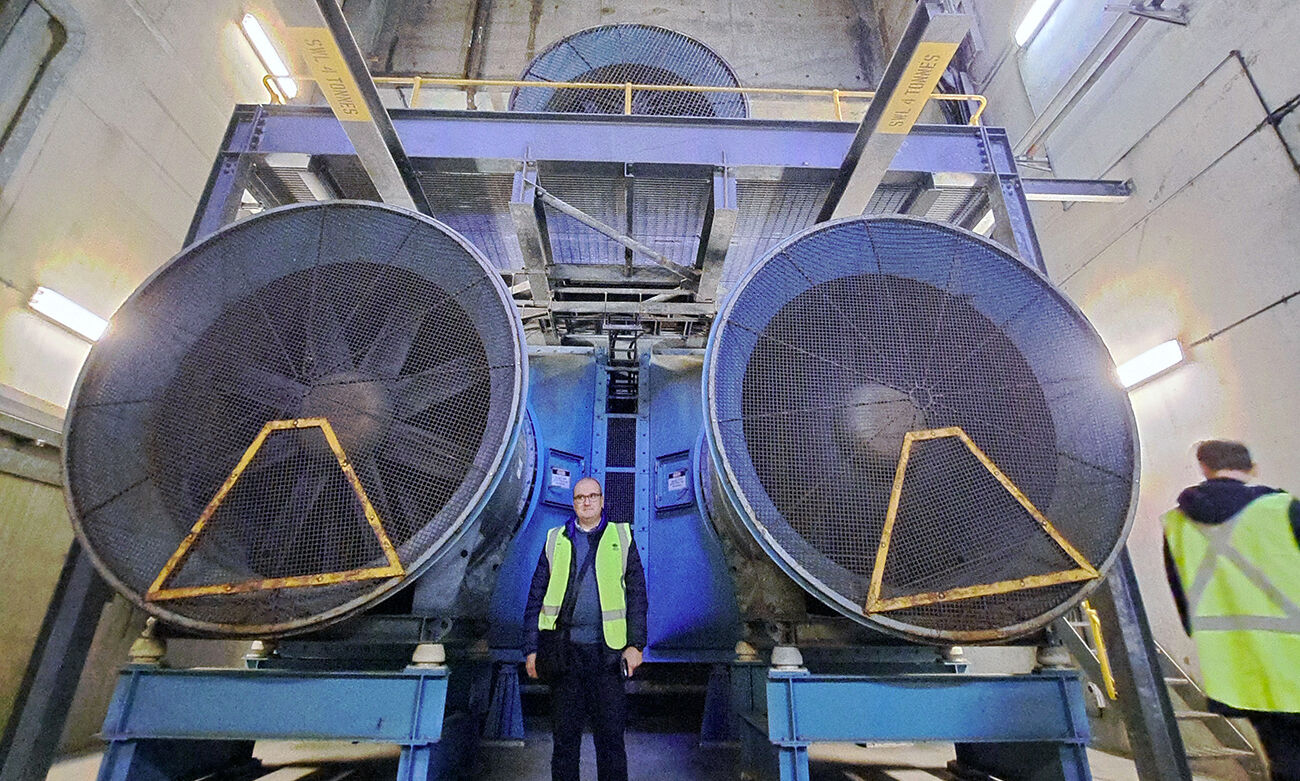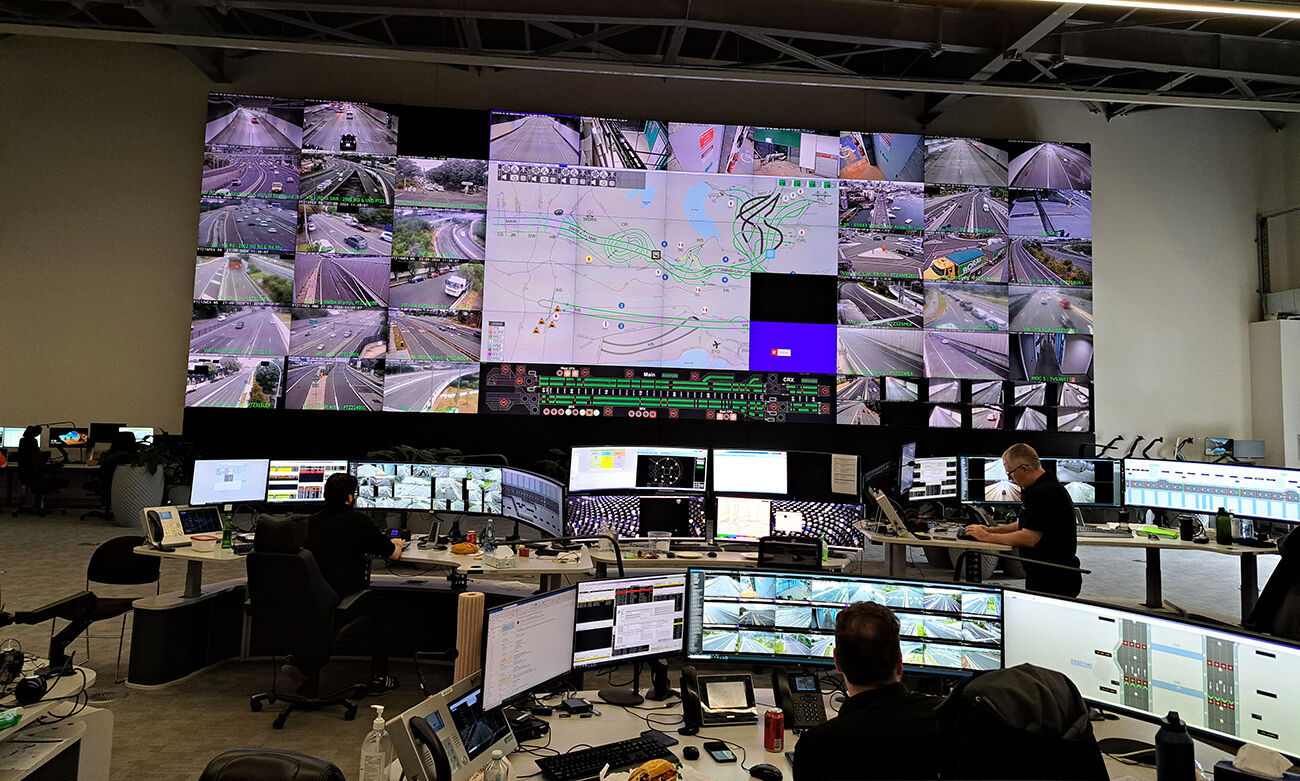International Workshop on Lifecycle Interventions to Lift Road Tunnel Sustainability
26 September 2024, Sydney (Australia) and online
The International Tunnel Workshop was organized with great success on September 26, 2024 in Sydney (Australia) in collaboration with Austroads (PIARC's National Committee in Australia and New Zealand), Transport for New South Wales (TfNSW) and PIARC's Technical Committee 4.4 "Tunnels". The event highlighted topics related to tunnel operation, maintenance, safety and inspection.
Workshop Summary
The International Technical Workshop on Tunnels brought together around 140 participants from the tunnel technical community, including 33 members of PIARC's International Technical Committee 4.4 "Tunnels".
The topic of the Workshop “Lifecycle Interventions to Lift Road Tunnel Sustainability” included many current topics relevant for the International Tunnel Community, PIARC TC4.4 and the needs of Australia and New Zealand. The topics covered tunnel operation, inspection and maintenance of tunnels as well as tunnel safety. The overall objective was the exchange of good practices and to learn about the experience and challenges in other countries.
The Workshop was opened by the Australian traditional “Welcome to Country” speech by the Aboriginal Land Council, followed by welcome speeches by Mark Smith (TfNSW), Geoff Allan (Austroads), Ingo Kaundinya (German Federal Highway Research Institute, PIARC TC4.4 Chair) and Rahul Gupta (PIARC General Secretariat). In the Keynote presentation Arnold Dix (President International Tunnelling and Underground Space Association (ITA)) highlighted the ITA perspective on the topic “Why sustainability enhancements of existing tunnels are essential to the future of transportation Tunnels”.
The panel discussion “Challenges and Opportunities in Tunnel Operation”, facilitated by Tanya Harding (Transurban), with panelists from Australia involving fire safety specialist (Craig Hiscock, Tactix Sener) and asset operator and maintainers (Michael Kost, Transurban and Portia Pitt, Ventia) set the basis for the workshop by highlighting the operational challenges faced in the Australian tunnel industry. This discussion was very interesting for the international tunnel experts and helped focus and understand the key points relevant to Australia in following sessions.
In the following presentation Bernhard Kohl (ILF Group) and Conrad Stacey (Stacy Agnew) explained the update of the Dangerous Goods Quantitative Risk Assessment Model in order to make it applicable in Australia. PIARC’s DGQRAM software is a state-of-the-art tool, which could be used for comparing dangerous goods risks in road tunnels to those of alternative routes outside tunnels. A DGQRAM training session in Brisbane, Australia, is planned for early next year, if there will be enough interest by Australian tunnel experts.
In the following session on tunnel operation there were presentation on relevant issues regarding sustainable operation of tunnels (Eric Premat, CETU and Andrew Eckersley, Transurban), tunnel safety and incident response (Kaan Kaptan, Eurasia Tunnel), tunnel control and efficient operation (René List, ASFINAG) as well as positioning via GNSS signal transferred into underground structures (Suben Subenthiran, TfNSW).
In the afternoon session on tunnel maintenance the presentations covered intelligent monitoring technologies for safe tunnel operation (Yao Rong, Jiangxi Communications Investment Maintenance Technology Group Co), innovative tunnel inspection systems (Chuljin Hwang, Korea Expressway Corp.) and strategic risk analysis for Australian tunnels (Catherine Kemsley & Anthony Curry, Ventia).
The second panel discussion, facilitated by Arnold Dix (President ITA), discussed the topic of “Why should we do best practice and not appropriate practice?”. Panelists included Tiago Massingue (Sanral, English Speaking Secretary of PIARC TC 4.4), Hélène Mongeot (CETU, French Speaking Secretary of PIARC TC 4.4), Rahul Gupta (Indian Ministry of Road Transport & Highways), Tyler Weldon (Colorado Department of Transportation) and Terry McGavin
(Waka Kotahi New Zealand Transport Agency). The exchange of different views on the definition and topic of best practices versus appropriate practices for operation, maintenance and refurbishment of tunnels showed the different philosophies and experiences worldwide, which gave delegates a good insight of existing approaches which worked well in the respective countries. In some countries by challenging best practice and focusing on what’s considered most appropriate some jurisdictions were able to realise cost savings by a fit for purpose design.
The last session focused on project delivery and consisted of various presentations which showcased sustainable practices across the project life cycle. Phil Clark (Transport for New South Wales) complex urban mega tunnel project Westconnex with more than 30 km of tunnels), the reuse of an old rail tunnel for public bus transport (Frédéric Waymel, Egis) and examples from Brazilian tunnel projects, which are sustainable by focusing on the needed key elements in construction and operation (Ricardo Miranda, Enrpodes Consulting Ltd). The workshop ended with closing remarks, some technical conclusions and a big thanks to the organizers of the workshop by Ingo Kaundinya (PIARC TC4.4 Chair). Ingo also invited Australian and New Zealand tunnel experts to further cooperate with PIARC’s tunnel committee and to join the committee or one of the working groups.
| International Workshop Proceedings - 26 September 2024 Lifecycle Interventions to Lift Road Tunnel Sustainability |
|---|
08:30 - 09:00 | Registration | |
09:00 - 10:15 |
PIARC Institutional Presentation
| |
09:40 - 10:15 | Panel Discussion: Challenges and Opportunities in Tunnel Operations
| |
10:15 - 10:35 |
| |
10:35 - 11:00 | Coffee break | |
11:00 - 12:30 |
| |
12:30 - 13:15 | Lunch break | |
13:15 - 14:45 |
| |
14:15 - 14:45 | Panel Discussion: Why should we do best practice? Why not appropriate practice?
| |
14:45 - 15:15 | Coffe break | |
15:15 - 16:20 |
| |
16:20 - 17:00 | Closing session
| |
Technical conclusions of the workshop
One of the main conclusions of the workshop was that good practices are sometimes very different worldwide, but are appropriate in the respective country and application case. The concept of international best practices must be aligned to appropriate engineering judgement, innovation, funding availability and budget constraints. Countries with extended tunnel network are constantly challenged as to how best they can fit all modern technology demands into the long existing tunnels currently in operation. Sustainability could be lifted in road tunnel operation by:
- Optimizing and reducing energy consumption of ventilation and lighting systems (e.g. with LED) and implementation of intelligent control systems,
- Harmonising traffic flow and prevent accidents by innovative technologies like pacemaker lights,
- Use of fast incident response measures to get fast back into normal operation after a disruption,
- Use of automatic inspection and maintenance tools including AI technologies,
- Using risk analysis as an important tool to choose sustainable safety measures for existing tunnels,
- Use of a “Lifecycle design approach” to allow optimum operation and maintenance,
- Implementing only the necessary key safety and operational installations and not everything which is "nice to have",
- Using existing tunnels as long as possible (in the best case "forever").




